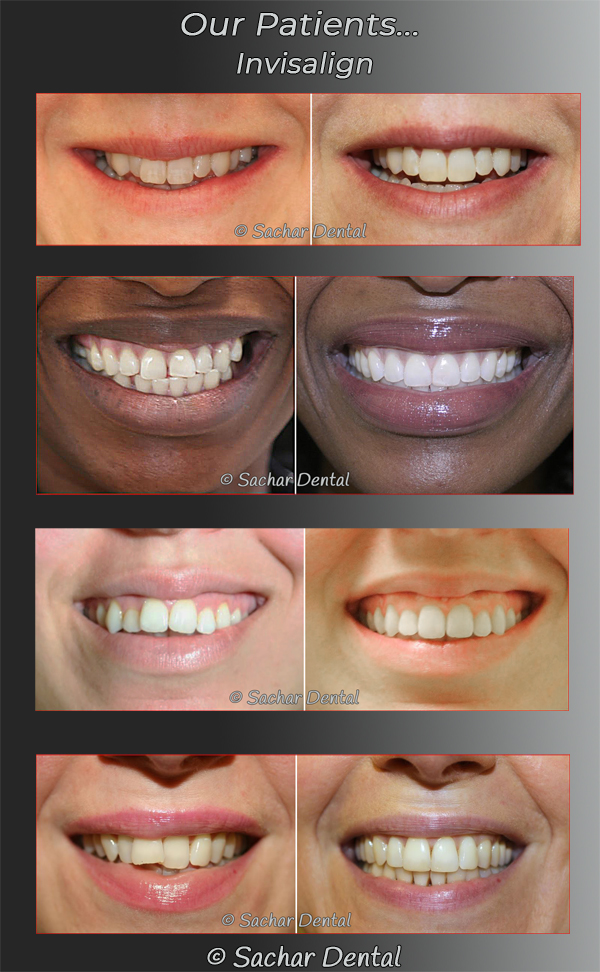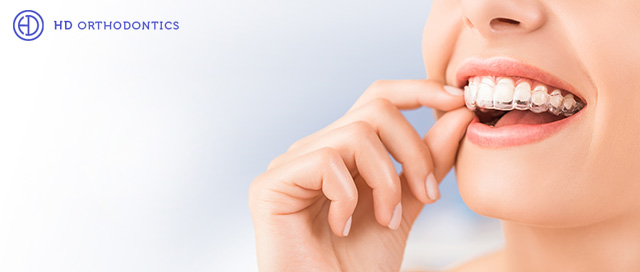Invisalign vs. Traditional Dental braces: Which Choice Is Right for You?
When considering orthodontic treatment, the option between Invisalign and traditional dental braces offers a number of crucial variables that merit cautious analysis. Invisalign provides a discreet alternative with removable aligners, while standard braces supply an extra visible yet effective option for extreme misalignment.
Introduction of Therapy Options

In contrast, conventional dental braces contain metal brackets and cords that are bonded to the teeth. This approach applies constant stress over time to accomplish alignment. While reliable for complicated orthodontic concerns, conventional dental braces require normal gos to for changes and can pose obstacles in maintaining oral health due to the trouble of cleaning about braces and cables.
Both options have their advantages, and the option commonly rests on certain oral conditions, way of life choices, and patient compliance. Inevitably, speaking with an orthodontic expert is important for identifying the most ideal treatment strategy tailored to specific requirements. Comprehending the nuances of each choice can considerably affect the total success of orthodontic therapy.
Visual Factors To Consider
A substantial variable influencing the choice in between Invisalign and typical braces is the visual appeal each treatment supplies. Invisalign aligners are crafted from clear plastic, making them virtually invisible when used.
On the other hand, conventional dental braces include steel braces and wires, which can be a lot more noticeable. While developments in orthodontic technology have resulted in the advancement of smaller sized brackets and tinted elastics, standard dental braces still preserve a more noticeable profile. For some individuals, the visibility of braces might discourage them from looking for necessary treatment.
Inevitably, the selection between Invisalign and standard braces may hinge on personal preferences regarding visual appeals. People who prioritize discretion usually lean toward Invisalign, while those that are much less concerned concerning visibility might choose for typical braces. Recognizing the aesthetic effects of each choice is important for making an informed choice that lines up with one's lifestyle and preferences.
Comfort and Convenience

In regards to convenience, Invisalign aligners are detachable, enabling patients to Homepage enjoy their preferred foods without Our site constraint and maintain optimal oral health. Cleaning and flossing are streamlined, as the aligners can be gotten during these regimens, whereas conventional braces require careful steering around brackets and cords.
In addition, Invisalign's progressive system permits less orthodontic check outs. Clients generally receive multiple collections of aligners simultaneously, which can streamline the treatment process and reduce time spent in the orthodontist's chair. In contrast, traditional dental braces require normal adjustments, making them much less hassle-free for those with hectic timetables. Invisalign. In general, the convenience and convenience of Invisalign make it an appealing option for several individuals looking for orthodontic therapy.
Therapy Duration and Efficiency
While both Invisalign and typical dental braces work in remedying dental misalignments, the duration of therapy can differ significantly in between both choices. Normally, Invisalign therapy can take anywhere from 12 to 18 months, depending on the intricacy of the case. The clear aligners function by gradually moving teeth into their desired settings, and regular follow-ups with an orthodontist assistance make sure development stays on course.
In comparison, traditional braces commonly require a longer commitment, typically varying from 18 months to three years. This is due to their fixed nature and using wires and braces, which can be much more efficient for complicated cases and extreme imbalances (Invisalign). The therapy efficiency of typical braces is well-documented, as they permit precise modifications and higher control over tooth movement
Inevitably, the option in between Invisalign and traditional braces may rest on both the anticipated treatment duration and the certain dental issues at hand. Consulting with an orthodontist is important, as they can provide customized referrals based on private demands, making sure the chosen approach straightens with desired durations and outcomes.
Price Comparison and Insurance Alternatives
Cost plays a substantial function in the decision-making process for individuals thinking about orthodontic treatment, whether choosing for Invisalign or standard braces. Usually, the expense of click for info Invisalign arrays from $3,000 to $8,000, while standard dental braces commonly cost in between $2,000 and $6,000. Aspects influencing these expenses include the intricacy of the instance, the period of treatment, and geographical place.
Many dental insurance plans provide partial coverage for orthodontic therapies, but the specifics can vary commonly. Typically, standard braces might be much more frequently covered by insurance policy plans compared to Invisalign, which some insurance providers classify as an aesthetic treatment.
In addition, a number of orthodontic methods use versatile payment plans, making both treatment choices more accessible. Clients must ask about potential financing alternatives and price cuts for ahead of time repayments. Assessing the overall cost, including insurance coverage benefits and settlement plans, is important for making an educated decision that aligns with both aesthetic preferences and budget considerations.

Conclusion
In summary, the selection between Invisalign and standard dental braces depends upon multiple elements, including aesthetic preferences, comfort, therapy duration, and cost. Invisalign offers a very discreet, removable choice that facilitates dental health and nutritional adaptability, while traditional braces may be better for complicated dental issues and typically come with a reduced price point. Inevitably, consultation with an orthodontist is important to analyze private conditions and identify the most ideal treatment option for achieving optimal oral positioning.
When taking into consideration orthodontic therapy, the selection in between Invisalign and conventional dental braces presents several essential variables that merit mindful examination.Comparing Invisalign and typical braces exposes distinctive treatment alternatives for orthodontic correction.While both Invisalign and conventional braces are effective in correcting dental imbalances, the period of treatment can vary substantially between the 2 options.Price plays a significant role in the decision-making process for individuals thinking about orthodontic therapy, whether deciding for Invisalign or traditional braces.In recap, the selection in between Invisalign and typical dental braces pivots on multiple elements, including visual preferences, comfort, treatment period, and price.